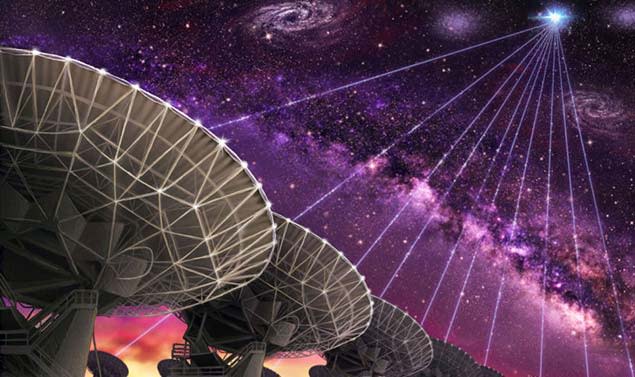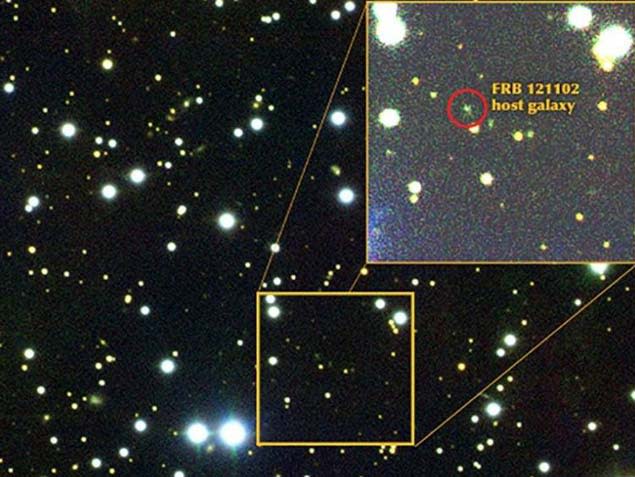Radio signals traced to galaxy billions of light years away

Scientists have traced mysterious radio waves to a dwarf galaxy more than three billion light years away.
The first "fast radio burst" (FRB) was discovered 10 years ago and they have baffled astronomers ever since.
The powerful but very short-lived bursts of radio waves - lasting no more than a millisecond - have been difficult to track.
Now, scientists at McGill University in Montreal and New York's Cornell University have used the Very Large Array - a multi-antenna telescope in New Mexico - to determine the exact location of the flash, known as FRB 121102.
Their findings have been published in the science journal Nature and presented at the American Astronomical Society's annual conference in Texas.
Astronomers studied nine bursts from the FRB for six months and were able to hone in on their exact position in the cosmos.

Dr Shami Chatterjee, from Cornell University, said: "These radio flashes must have enormous amounts of energy to be visible from over three billion light years away."
The cause of the bursts remains a mystery, however.
Some believe they are from a very dense neutron star with a powerful magnetic field - a "magnetar" - surrounded by debris from a stellar explosion.
The source could also be jets of material shooting out from the rim of a "supermassive" black hole.
Eighteen FRBs have been detected since the first one was discovered in 2007, but only one - spotted in 2012 by astronomers at the Arecibo Observatory in Puerto Rico - has recurred repeatedly.
As well as bright bursts from FRB 121102, an ongoing, persistent source of weaker radio emissions have been traced in the same region.
"Finding the host galaxy of this FRB, and its distance, is a big step forward, but we still have much more to do before we fully understand what these things are," said Dr Chatterjee.

 Yahoo Finance
Yahoo Finance 